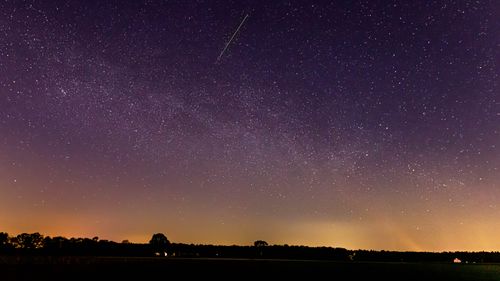Stargazers, you are in luck: those keen to stay up until early hours of the morning may be rewarded with an astronomical event that has been observed for thousands of years.
The Lyrid meteor shower is expected to reach its peak tonight and tomorrow with up to 10 to 20 meteors per hour in the late-night sky, according to NASA.
Although best seen in the Northern Hemisphere, Aussies with patience, a dark sky and a good eye are still able to see the meteors.
Want to observe for yourself? Here’s what you need to know.

What is the Lyrid meteor shower?
The Lyrid meteor shower, also simply known as the Lyrids, is an annual celestial event that usually occurs every April.
It holds its distinction with being one of the oldest recorded meteor showers, with observations dating back approximately 2700 years, according to NASA.
The phenomenon occurs as Earth intersects with the debris trail left by Comet Thatcher – more formally known as C/1861 G1 (Thatcher).
As our planet passes through this trail, small particles from the comet disintegrate upon entering Earth’s atmosphere at up to 47km/s.
This creates short but bright streaks of light visible across the night sky.
Unlike other meteor showers, they typically don’t leave long glowing dust trails – but they do occasionally produce very bright flashes known as fireballs.

The Lyrids occur annually in mid-to-late April, typically becoming active around April 17 to April 26.
In Australia, the peak viewing time is usually April 21 to April 22, with anywhere between 10 to 20 meteors per hour.
The best time to observe is generally in the very early hours of the morning.
Luckily for us, the meteor shower is visible to the naked eye without any special equipment and is safe to observe.

How can I see the Lyrids?
Make sure to look for a clear, dark sky at night without any light pollution and dress appropriately for the weather.
Look around north to north-east just above the horizon and allow for half an hour for your eyes to adjust.
Watch for bright flashes or streaks of light across the night sky into the early hours of the morning.
When it does happen, it will appear pretty quickly – make sure to make a wish when you see the meteors!
Don’t worry if you miss the Lyrids, the next visible meteor event is in early May.
The Eta Aquarids meteor shower is another annual event that peaks May 6 and 7.







